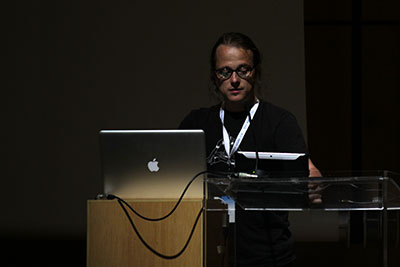Paper: The Art of Trickery: Methods to establish first contact in Internet scams
Title: The Art of Trickery: Methods to establish first contact in Internet scams
Author(s): Andreas Zingerle
Email: andreas.zingerle (at) ufg.ac.at
Published at: xCoAx conference 2014, Porto, Portugal.
Abstract:
Internet scammers use fictional narratives to gain the trust of potential victims. These narratives are often pre-scripted, get send out by individual scammers or scam-groups and are often copied and reused by other scam-gangs. Vigilante online communities of scam baiters try to jam the practices of these Internet scammers by using similar social engineering techniques to hook the scammers into a story and consequently interrupt their workflow. In this paper, through examples, I want to take a closer look at the scammers working methods and focus on two different strategies on how scambaiters use to approach scammers.
References:
Berry, Michael, Greetings in Jesus name! The scambaiter letters. York: Harbour, 2006.
Bluth, Banana, Area 419: Scambaiting Radio, Episode 3. Retrieved Apr. 6, 2014 from http://itunes.apple.com/us/podcast/area-419-scambaiting-radio/id359035187, 2010.
Brunton, Finn, Spam: Shadow History of the Internet. The MIT Press, 2013.
FTC, Federal Trade Commission Consumer Information, Fake checks, Retrieved Apr. 6, 2014 from http://www.consumer.ftc.gov/articles/0159-fake-checks, 2012.
Freiermuth, Mark, ‘This Transaction Is 100% Risk-Free!’ Why Do People Fall Prey to E-Mail Scams? LANCOMM – Int. Conference on Language and Communication 2011.
GNA, Three computer frausters arrested, Available online: http://www.ghanaweb.com/GhanaHomePage/crime/artikel.php?ID=106927, 2006.
Goffman, Erving, Self Claims: On Cooling the Mark Out: Some Aspects of Adaption to Failure.In The Goffman Reader, edited by Lemert, C. and Branaman, A. Malden: BlackwellPublishing, 1997.
Hartikainen, Elina, The Nigerian Scam: easy money on the Internet, but for whom? Michicagoan Graduate Student Linguistic Anthropology Conference, 2006.
History of 419 Spam – Spam Mails, Advance Fee Fraud, Spammers, Spam Victims. Retrieved Apr. 6, 2014 from http://www.nigerianspam.com/history-419-scam.htm
Hotz-Davies, Ingrid, and Anton Kirchhofer, Internet fictions. Newcastle upon Tyne: Cambridge Scholars, (2009).
Interview with a Scammer. Retrieved Feb. 14, 2013 from http://www.scamdetectives. co.uk/blog/2010/01/26/interview-with-a-scammer-parttwo/, 2010.
Isacenkova, Jelena, Olivier Thonnard, et al.Inside the SCAM Jungle: A Closer Look at 419 Scam Email Operations. IEEE Security and Privacy Workshops, p.143-150, Retrieved Apr. 6, 2014 from http://www.ieee-security.org/TC/SPW2013/papers/data/5017a143.pdf, 2013.
Jenkins, Henry, Transmedia Storytelling 101. Retrieved Apr. 6, 2014, from http://henryjenkins.org/2007/03/transmedia_storytelling_101.html, 2007.
Krebs, Brian,Online Service Offers Bank Robbers for Hire. Retrieved Apr. 6, 2014 from http://krebsonsecurity.com/tag/money-mules/, 2012.
Ogwezzy, Michael, Cybercrime and the profileration of Yahoo addicts in Nigeria. International Journal of Juridical Sciences, ISSN 1843-570X, No.1 (2012), pp. 86-102.
Schneier, Bruce, Interview with a Nigerian Internet Scammer. Retrieved Apr. 6, 2014 from https://www.schneier.com/blog/archives/2010/02/interview_with_16.html , 2011.
Tade, Oludayo, and Ibrahim Aliyu, Social Organization of Internet Fraud among University Undergraduates in Nigeria. International Journal of Cyber Criminology, vol. 5, no. 2, pp. 860–875, 2011.
Zingerle, Andreas, and Linda Kronman,Humiliating entertainment or social activism? Analysing scambaiting strategies against online advance fee fraud. Cyberworlds 2013 Conference, DOI: 10.1109/CW.2013.49, 2013.
Zuckoff, Mitchell, The Perfect Mark, The New Yorker: PRINTABLES 2006-05-08, 2006.

